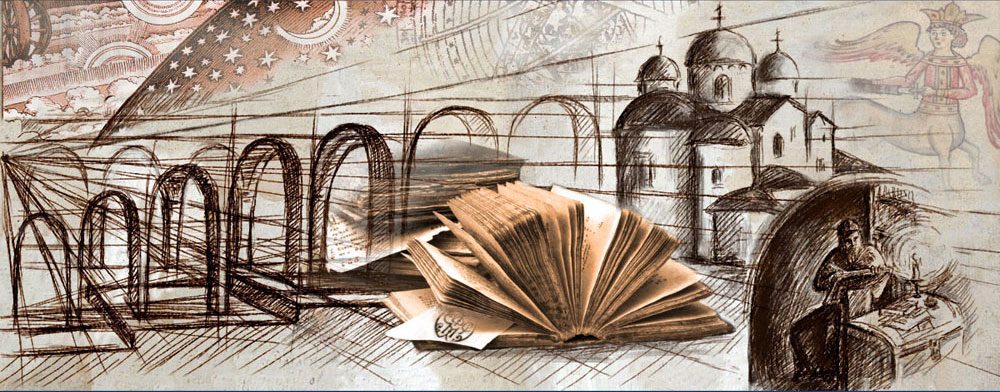The noted Euphrosynus Readings are distinctive and mysterious phenomenon of Russian culture. These miscellanies were written by the monk Euphrosynus of the Kirillo-Belozersky Monastery (St. Cyril of Beloozero's Monastery) in the late fifteenth century. Even today the readings overwhelm imagination by a deverse and wide range of works contained therein. The compiler's editing methods and the contents of the manuscripts are also quite startling. Many of works are unique and have come to us only thanks to Euphrosynus.
The contemporary of the famous Leonardo da Vinci, Euphrosynus has not left any personal information about himself. But from his manuscripts, we know that he was an intellectual, striving to understand the universe, nature and man, the laws of history and culture. Not by chance, a miniature in one of the miscellanies depicts the winged centaur Kitovras, a mythological creature from the ancient apocryphal story Tale of Solomon and Kitovras. The centaur answered questions of King Solomon and even competed with him in wisdom. Kitovras became the personification of the sharpness and almighty power of the mind. Like the mysterious Kitovras, the creations of the great genius of the Renaissance conceals many riddles. Euphrosynus can be compared with Leonardo in mysteriousness, but above all, they share another common trait: each wanted to grasp the immensity of the universe of human thought.
The five Euphrosynus miscellanies had been preserved in the ancient library of the Kirillo-Belozersky Monastery (St. Cyril of Beloozero's Monastery) that was transferred in the National Library of Russia (then the State Public Library) in 1918. They are a valuable testimony of cultural and historical processes that took place in Old Russia at the time then European civilization experienced the period of the Renaissance. The texts from the readings were included in the anthologies of Old Russian literature.
The resource, we presented here, gives the public the chance to see the rarest manuscripts, previously inaccessible to most audiences.
The project was implemented as part of the federal action programme «Culture of Russia».
